From June 20 to Sept. 28, 2025, the second-floor rooms of the International Gallery of Modern Art at Ca’ Pesaro in Venice will host a solo exhibition of Antonello Viola, a Roman artist born in 1966 and one of the most lyrical interpreters of contemporary Italian painting. Curated by Elisabetta Barisoni, director of the museum, the exhibition brings together a selection of works created over the past four years, many of which are being presented to the public for the first time.
The project is conceived as a silent and profound dialogue with Venice, a liquid city par excellence, in which every surface is reflected and every border is fluid. And it is precisely this quality that animates the entire poetics of Viola, a painter of transparencies and dissolves, who in matter seeks the beyond: time, light, memory.
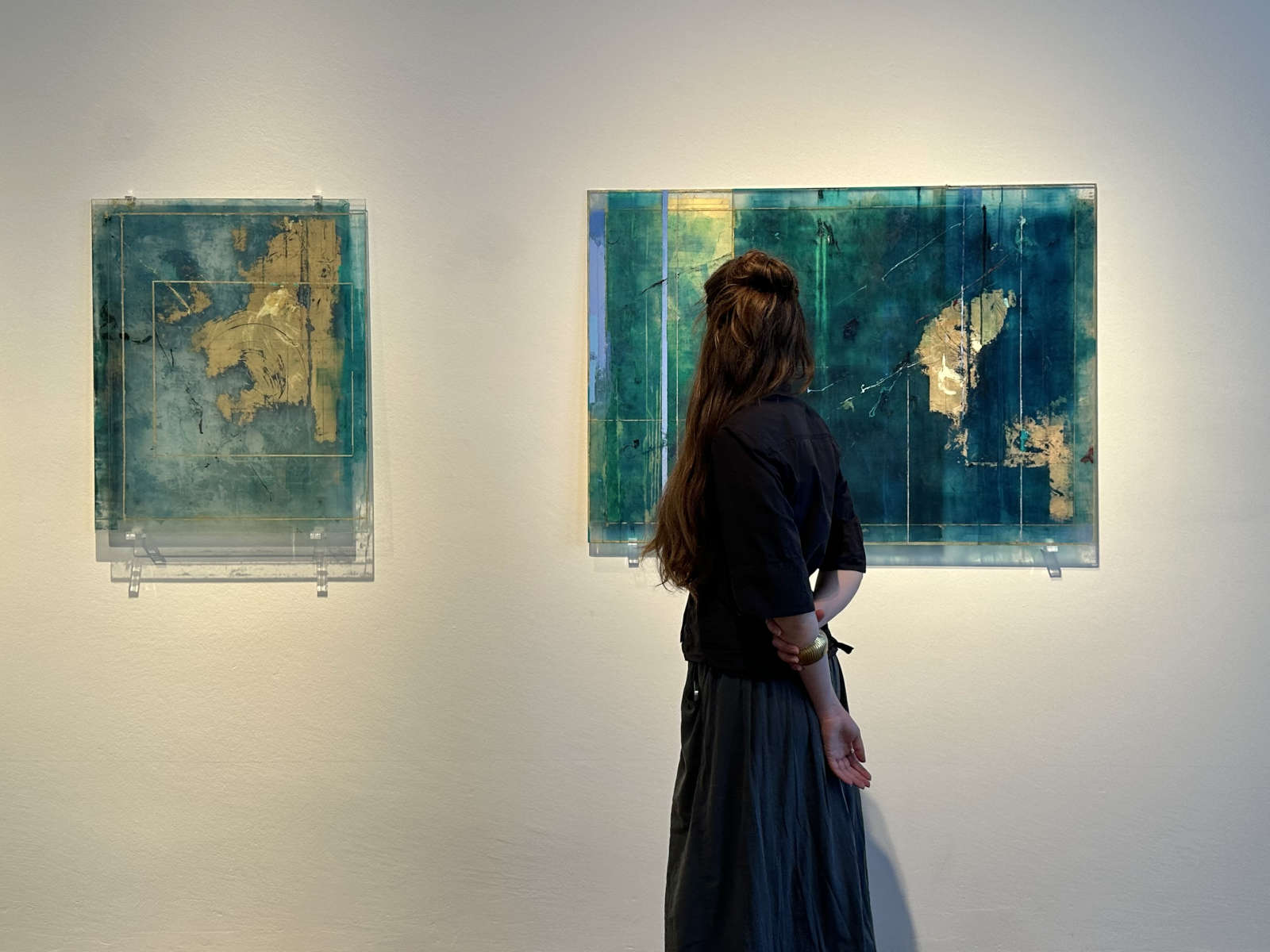
In the pictorial world of Antonello Viola, color is never just a decorative element: it is pure energy, a living presence that modulates in relation to space, time and light. His surfaces-whether they are made of glass or Japanese paper-never offer themselves as static images, but are continuously transformed, changing with lighting, resonating with the movement of the gaze.
Color, then, is pulsating matter and, at the same time, immaterial. A liquid skin that reveals the layering of gestures, the accumulation of marks, the slow depositing of paint. On this vibrant surface, gold leaf acts as a spiritual and luminous element, suggesting sacredness without rhetoric, a silent tension toward the absolute. Each work is thus an atmospheric event, a visual revelation that reveals itself in the time of observation.
Antonello Viola works in the sign of non-objectivity: his works do not represent, but evoke. There is no narration, but evocation of states, presences, sensations. In this, the artist stands in continuity with the legacy of Russian Suprematism and the lesson of Kazimir Malevič, from whom the concept of “transfiguration in the zero of form” is inspired.
His works do not abstract from reality, but rather dissolve the object until it evaporates, to let atmospheres emerge that verge on the metaphysical. The result is images that appear as utopian islands, evocative even in their titles: Poveglia, Giudecca, Le Camere, Elba Island, Murano, Santo Spirito. Each name is a mental landing place, an imaginary map that holds together real places and inner visions, geographical spaces and states of the soul.
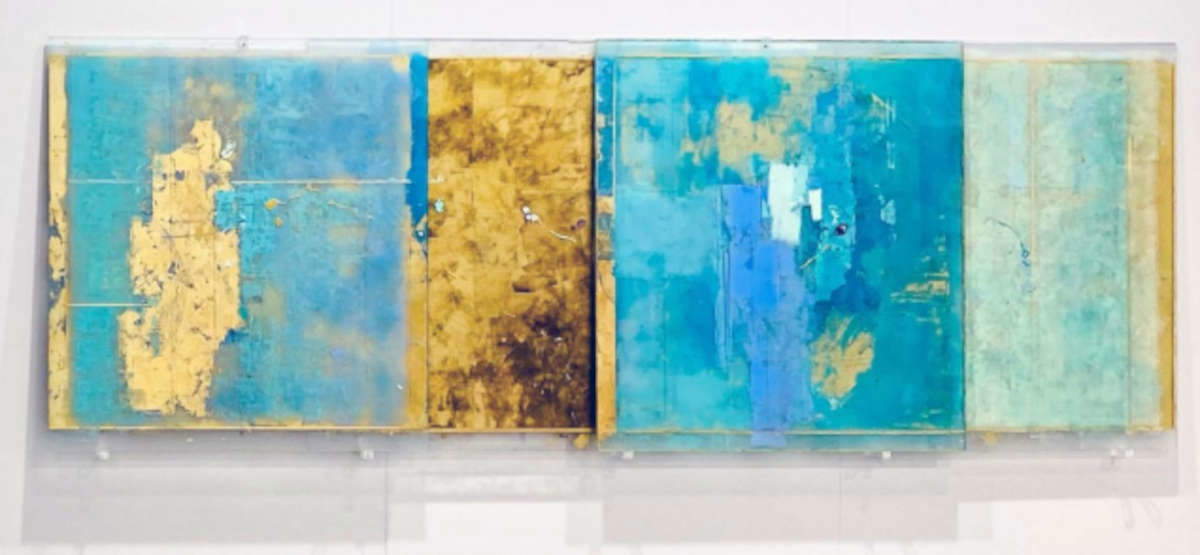
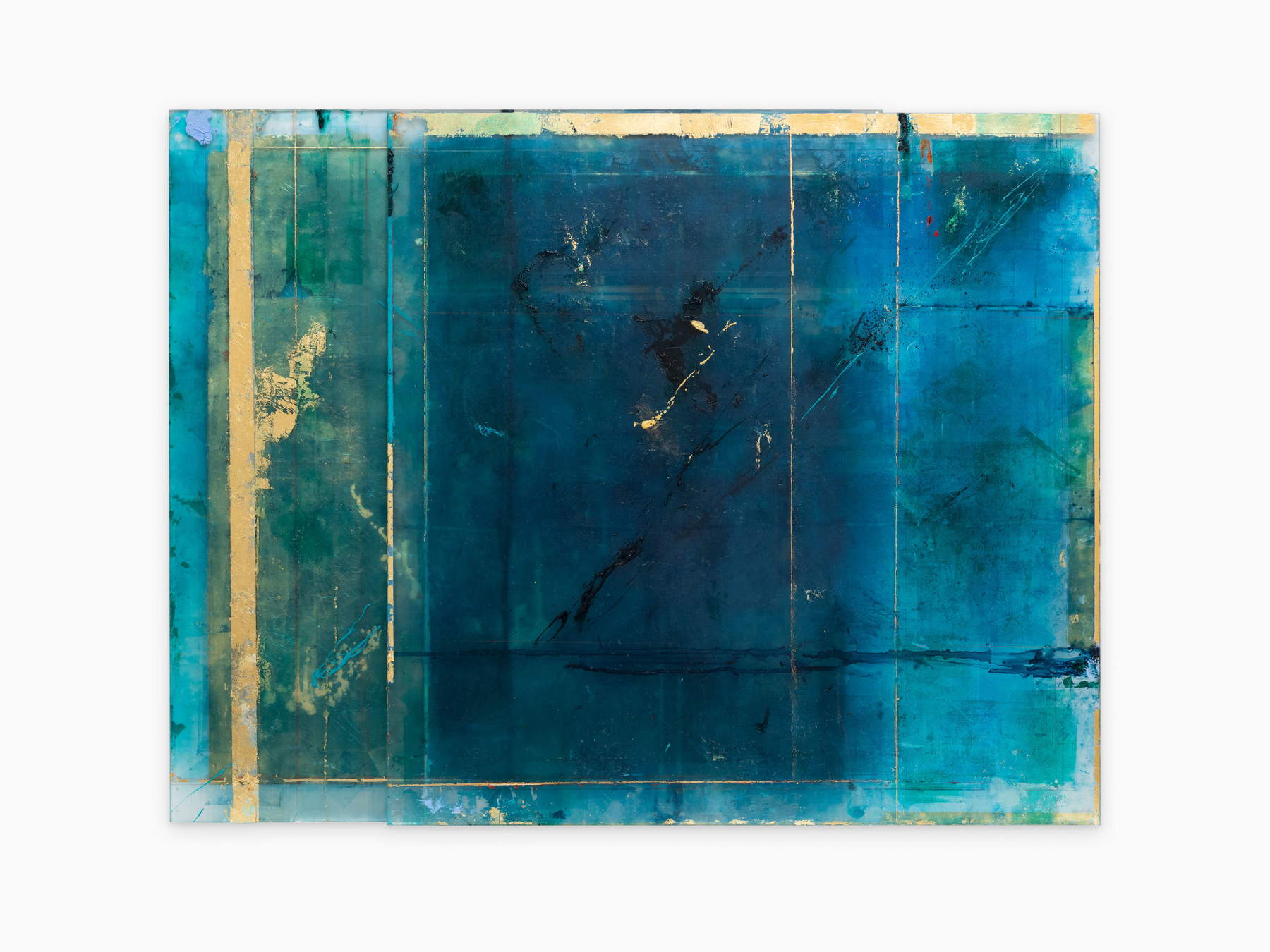
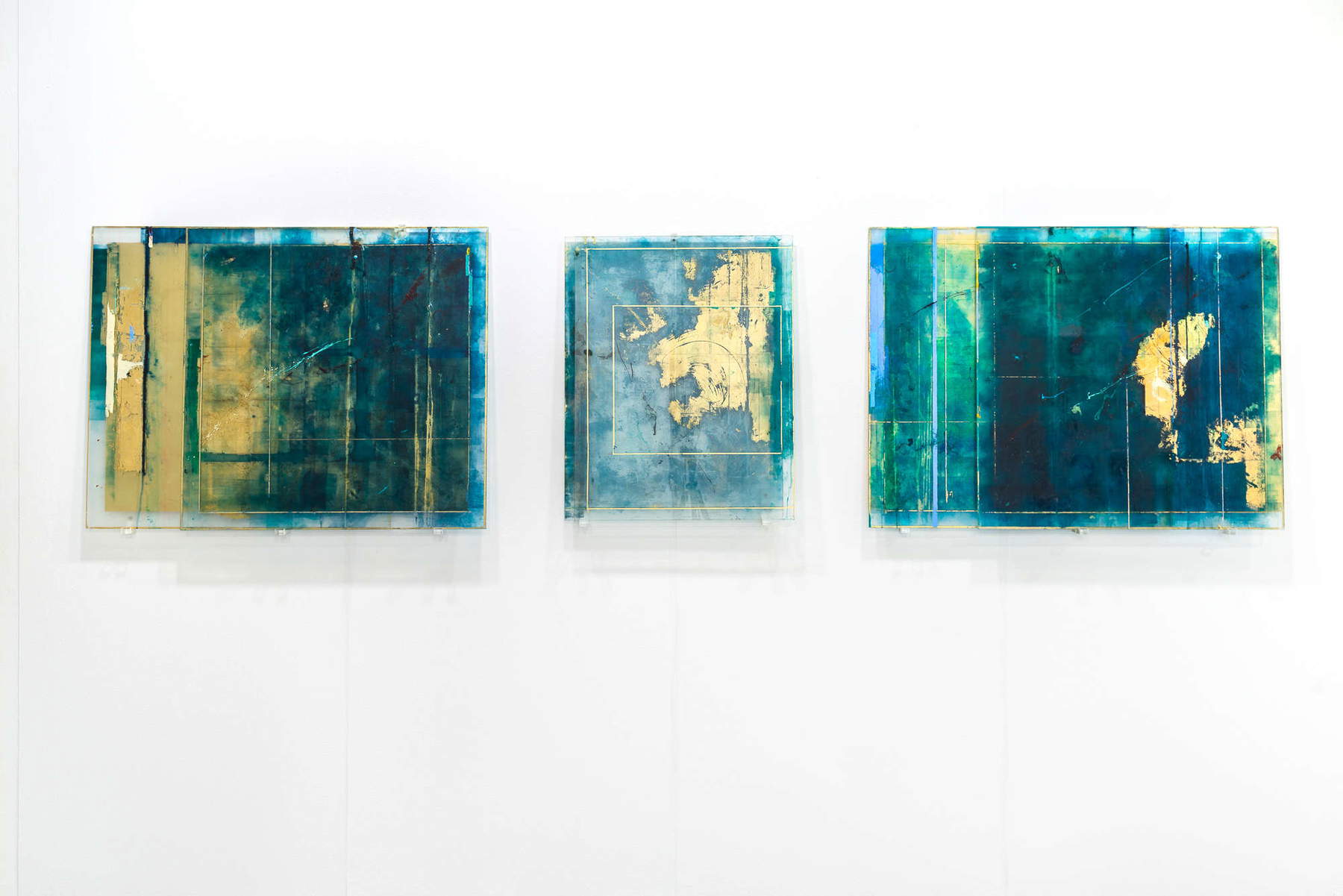
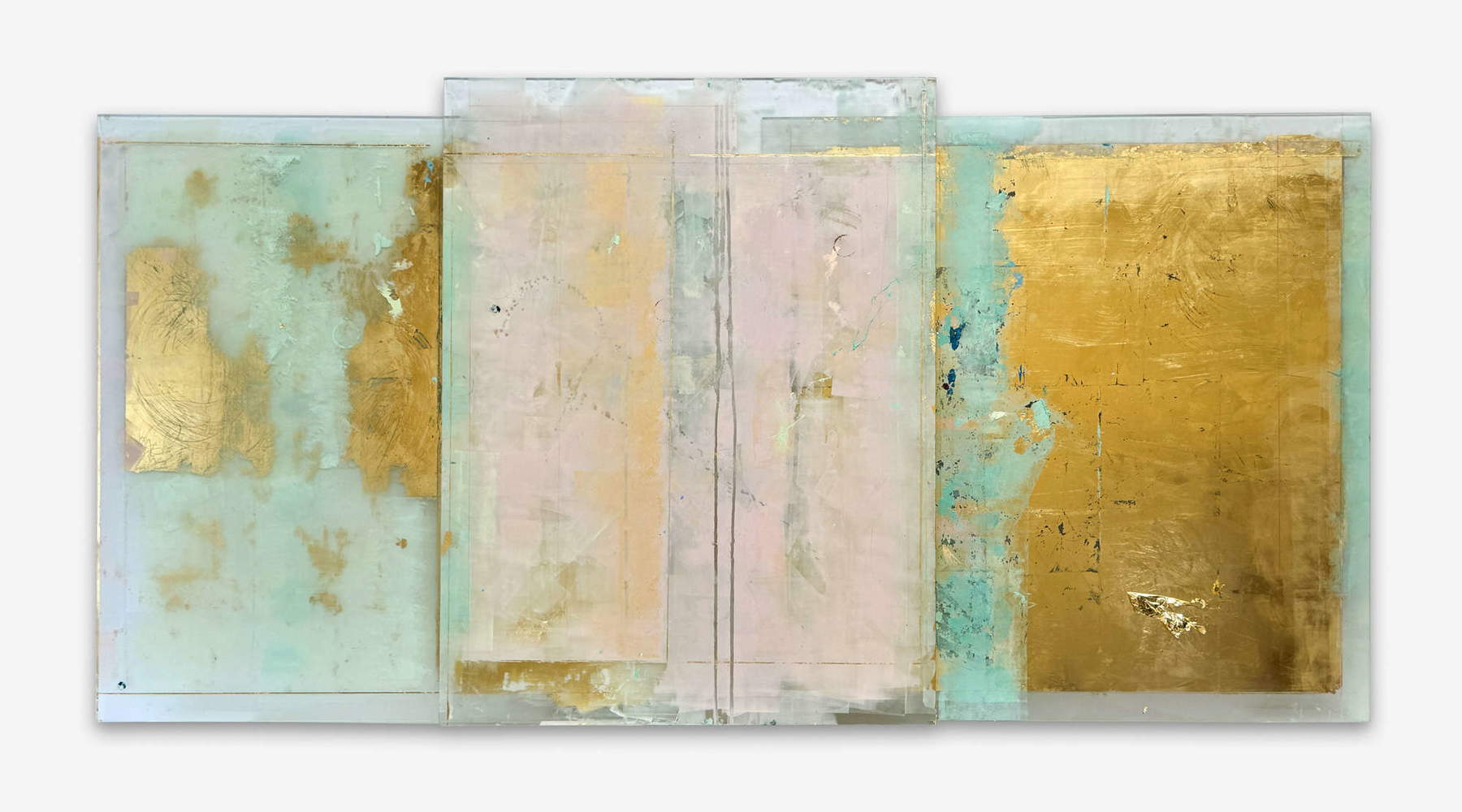
The heart of the exhibition consists of two nuclei of works: the paintings on glass and those on Japanese paper. In the former, the painting takes on a three-dimensional dimension, thanks to plates arranged on several levels and painted on both sides. These works unfold horizontally, evoking diaphanous and layered landscapes, which the visitor can almost pass through with his gaze. They are landscapes by transparencies, where light enters, filters, refracts and returns ever-changing visions.
In counterpoint, the works on paper are vertical and more iconic, like silent banners. Here, the presence of gold leaf becomes central, enhancing the luminous and spiritual effect of the whole. The pictorial gesture becomes more essential, but no less profound: each sign is a calibrated statement, a balance point between emptiness and presence.
This exhibition is also part of an explicit dialogue with Venice, a city that par excellence lives in reflection, in the mobility of the boundary between sky and water. Antonello Viola’s work absorbs and transfigures this condition, returning an image of the city that is not descriptive but ritualistic, built on light and flow. Just as the foundations of Venice redefine themselves with each tide, Viola’s painting is also an act in the making, accepting change and embracing it as part of its truth.
The exhibition project is also articulated in an internal dialogue with the museum’s collection, with particular reference to the work of Giulio Aristide Sartorio. Already in a recent exhibition at the National Gallery of Modern Art in Rome, Viola had placed his own papers alongside Sartorio’s works. At Ca’ Pesaro, this relationship is renewed and intensified: Sartorio’s Poem of Human Life, set up in the rooms adjacent to Viola’s exhibition, becomes a silent but powerful presence, suggesting a line of continuity between two Roman artists united by an idea of painting as a total vision, as an emotional and intellectual experience.
For all information, you can visit Ca’ Pesaro’s official website.
 |
| Antonello Viola at Ca' Pesaro: light, gold and silence in the art of flowing |
Warning: the translation into English of the original Italian article was created using automatic tools. We undertake to review all articles, but we do not guarantee the total absence of inaccuracies in the translation due to the program. You can find the original by clicking on the ITA button. If you find any mistake,please contact us.